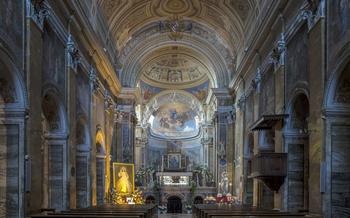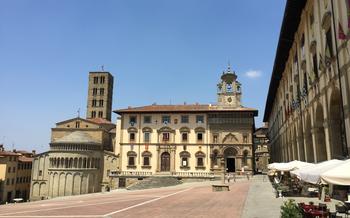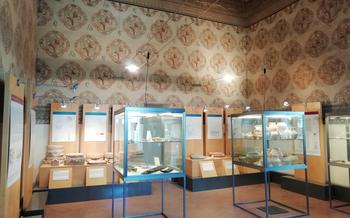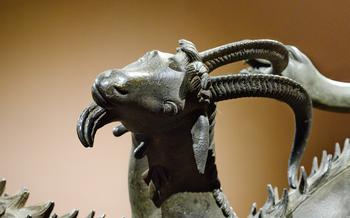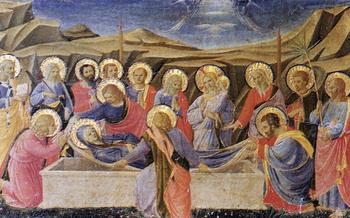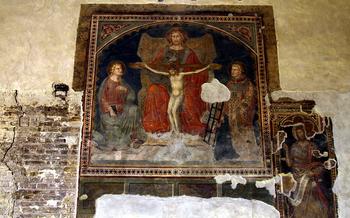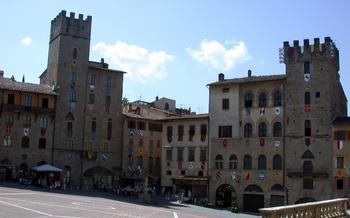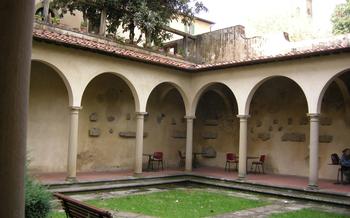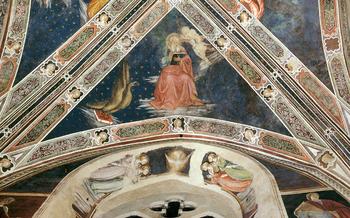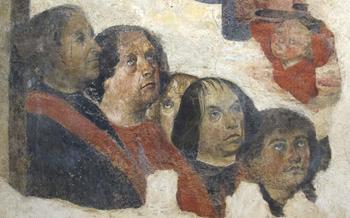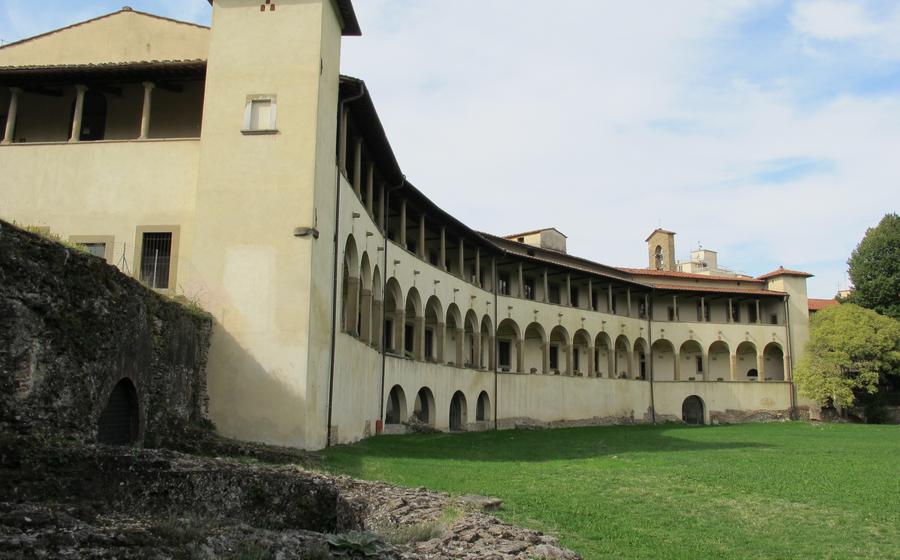
Museo Archeologico Nazionale Gaio Cilnio Mecenate
- Historical Context
- Location and Accessibility
- Hours of Operation and Admission
- Must-See Exhibits
- Interactive Displays
- Temporary Exhibitions
- Research Facilities
- Gift Shop
- Café
- Accessibility Features
- Photography and Videography
- Family-Friendly Activities
- Insider Tip
Historical Context
Nestled in the heart of Tuscany, Arezzo boasts a rich history that dates back to the ancient Etruscan civilization. Renowned for their exceptional craftsmanship, the Etruscans left an indelible mark on the city's cultural heritage. Their legacy is evident in the numerous artifacts unearthed from archaeological excavations, which provide a glimpse into their sophisticated urban society.
In 311 BC, Arezzo fell under Roman rule, marking a significant transformation in the city's fortunes. The Romans recognized the strategic importance of Arezzo and established it as a municipium, granting its citizens Roman citizenship. Under Roman rule, the city underwent a period of prosperity and expansion, with the construction of impressive public buildings, roads, and aqueducts.
One of the most notable figures associated with Arezzo during the Roman period was Gaius Cilnius Maecenas, a wealthy patron of the arts and close advisor to Emperor Augustus. Maecenas played a pivotal role in promoting the arts and literature during the Augustan period, and his influence extended to Arezzo, where he funded the construction of several significant buildings, including a theater and a temple dedicated to Apollo.
The Museo Archeologico Nazionale Gaio Cilnio Mecenate, named in honor of Maecenas, was established in the 19th century to preserve and showcase the rich Etruscan and Roman heritage of Arezzo. The museum houses an extensive collection of artifacts that tell the story of Arezzo's ancient past, providing visitors with a fascinating glimpse into the lives and culture of the Etruscans and Romans who shaped this remarkable city.
Location and Accessibility
The Museo Archeologico Nazionale Gaio Cilnio Mecenate can be found in the heart of Arezzo, a picturesque Tuscan city steeped in history and culture. It resides at Via Margaritone, 10, a short stroll from notable landmarks such as the Duomo, Piazza Grande, and the Vasari Loggia. The museum's proximity to these attractions makes it an ideal stop on a comprehensive tour of the city.
Arezzo is easily accessible by car, train, and bus. If driving, you can follow signs for the city center and utilize the designated parking areas near the museum. The Arezzo train station is a convenient option for those arriving by train, with regular services connecting the city to major destinations in Italy. Alternatively, several bus routes stop near the museum, offering a budget-friendly and eco-friendly transportation option.
Once you arrive at the Museo Archeologico, you'll find yourself immersed in the captivating world of Etruscan and Roman history. The museum's central location within Arezzo ensures that it's effortlessly integrated into the fabric of the city, inviting visitors to explore its treasures and delve into the rich cultural heritage that surrounds them.
Hours of Operation and Admission
The Museo Archeologico Nazionale Gaio Cilnio Mecenate welcomes visitors from Tuesday to Sunday, offering ample opportunities to delve into the wonders of Etruscan and Roman history. The museum's doors are open from 8:30 AM to 7:30 PM, allowing you to immerse yourself in the past at your own pace. However, it's worth noting that the last admission is at 7:00 PM, so plan your visit accordingly to make the most of your time.
Admission fees are set to ensure accessibility while supporting the museum's ongoing preservation efforts. The standard ticket price is €00, providing you with unrestricted access to the museum's permanent and temporary exhibitions. However, if you're a citizen of the European Union and between 18 and 25 years old, you're eligible for a reduced rate of €00. Additionally, children under 18 and visitors over 65 enjoy free admission, making the museum a family-friendly destination.
Guided tours are available for those who seek a deeper understanding of the museum's treasures. These tours, led by knowledgeable guides, provide insightful commentary and historical context, bringing the artifacts to life. The cost of a guided tour is €00 per person, in addition to the admission fee.
Whether you choose to explore independently or opt for a guided tour, the Museo Archeologico offers a rich and rewarding experience for visitors of all ages. So, step into the world of ancient Etruria and Rome, where history unfolds before your eyes, waiting to be discovered and cherished.
Must-See Exhibits
Among the museum's treasures, the renowned bronzes stand out as masterpieces of Etruscan craftsmanship. The Chimera of Arezzo, a mythical creature with a lion's head, a goat's body, and a serpent's tail, captivates visitors with its intricate details and fierce expression. Equally impressive is the Minerva of Arezzo, a graceful statue of the goddess Athena, adorned with a finely crafted helmet and intricate armor.
The museum also boasts an extensive collection of Etruscan pottery, showcasing the artistry and technical skill of these ancient craftsmen. From the elegant simplicity of bucchero ware to the vibrant colors and intricate designs of painted vases, these artifacts offer a glimpse into the daily lives and beliefs of the Etruscans.
Other notable exhibits include stelae, carved stone monuments that commemorate the deceased, often featuring elaborate reliefs depicting scenes from Etruscan mythology or everyday life. Exquisite jewelry, such as necklaces, bracelets, and earrings, showcases the Etruscans' love of adornment and their mastery of metalworking techniques. Weapons, including swords, spears, and helmets, provide insights into the Etruscan military prowess and their fierce defense of their territory.
Interactive Displays
The Museo Archeologico Nazionale Gaio Cilnio Mecenate boasts a range of interactive displays and multimedia presentations that bring Etruscan and Roman history to life. These innovative exhibits engage visitors of all ages, making complex historical concepts accessible and captivating.
One of the most popular interactive displays is a virtual reality tour that allows visitors to explore an ancient Etruscan city. Using VR headsets, visitors can immerse themselves in the bustling streets, marvel at the grand temples, and even interact with virtual characters who bring the city's history to life.
Another interactive exhibit features a 3D model of the Chimera of Arezzo, the museum's iconic bronze sculpture. Visitors can manipulate the model to examine the creature's intricate details from every angle, gaining a deeper understanding of its artistic and mythological significance.
Through these interactive displays, the Museo Archeologico Nazionale Gaio Cilnio Mecenate succeeds in bridging the gap between the ancient world and the modern visitor. These exhibits not only enhance the museum experience but also foster a deeper appreciation for the rich cultural heritage of Etruscans and Romans.
As I explored the museum's interactive displays, I was particularly impressed with the VR tour. The immersive experience transported me back in time, allowing me to wander through the ancient streets and feel a tangible connection to the past. It was a truly unique and unforgettable way to learn about Etruscan history.
Temporary Exhibitions
The Museo Archeologico Nazionale Gaio Cilnio Mecenate complements its permanent collection with a dynamic program of temporary exhibitions that delve into specific themes or artists related to Etruscan and Roman culture. These exhibitions often feature rare or seldom-seen artifacts from other museums or private collections, providing visitors with a unique opportunity to explore new perspectives and gain deeper insights into the ancient world.
Past exhibitions have showcased topics such as "The Etruscans and the Sea," which explored the maritime culture and trade networks of the Etruscans, and "Gods and Heroes of Ancient Rome," which featured sculptures and artifacts depicting mythological figures from Roman religion. These exhibitions have been well-received by visitors for their captivating narratives, stunning displays, and interactive components that bring ancient history to life.
The museum's temporary exhibitions change regularly, so be sure to check their website or social media pages before your visit to see what's currently on display. These exhibitions offer a fresh and exciting way to experience the museum's collection and gain a broader understanding of Etruscan and Roman civilization.
Research Facilities
Nestled within the Museo Archeologico Nazionale Gaio Cilnio Mecenate is a treasure trove for scholars and researchers—a specialized library that houses a comprehensive collection of books, journals, and manuscripts dedicated to Etruscan and Roman studies. This invaluable resource provides a wealth of information on the history, art, archaeology, and culture of these ancient civilizations. Scholars from around the world flock to the library to access these materials, conducting in-depth research and contributing to the advancement of our understanding of ancient Italy.
The library's collection is meticulously curated and boasts rare editions, out-of-print publications, and manuscripts that are not easily found elsewhere. Researchers can delve into the intricacies of Etruscan and Roman society, explore their artistic achievements, and gain insights into their religious beliefs, political systems, and everyday lives. Whether it's a doctoral student embarking on their dissertation or a seasoned professor pursuing a new line of inquiry, the library at the Museo Archeologico offers a wealth of resources to support their scholarly endeavors.
The museum recognizes the importance of fostering research and collaboration in the field of ancient studies. It actively supports researchers by providing access to its collection, hosting conferences and seminars, and collaborating with universities and institutions worldwide. Through these initiatives, the museum plays a vital role in advancing our knowledge of Etruscan and Roman history and culture, ensuring that the legacy of these ancient civilizations continues to inspire and inform future generations.
Gift Shop
As you exit the captivating exhibits, don't miss the opportunity to visit the museum's gift shop, which is stocked with a treasure trove of souvenirs that will transport you back to the world of the Etruscans and Romans. From intricately crafted replicas of ancient jewelry to books that delve deep into the history of the region, you'll find a unique selection of items that will ignite your passion for this ancient civilization. If you're looking for a special memento of your visit, the gift shop offers exclusive items that you won't find anywhere else. Consider purchasing a miniature bronze statue of the Chimera or a hand-painted Etruscan vase to keep the spirit of Arezzo alive in your home.
Café
Nestled within the Museo Archeologico Nazionale Gaio Cilnio Mecenate, visitors will find a charming café that offers a delightful respite from their exploration of ancient history. The café's ambiance is warm and inviting, with rustic wooden tables and comfortable seating that encourage relaxation and conversation. The menu features a selection of light refreshments and snacks, including freshly brewed coffee, fragrant teas, delectable pastries, and traditional Tuscan delicacies. While savoring these culinary delights, visitors can bask in the tranquility of the museum's surroundings and reflect on the wonders of Etruscan and Roman civilization. The café also provides a perfect spot to recharge before continuing the journey through the museum's captivating exhibits.
Accessibility Features
The Museo Archeologico Nazionale Gaio Cilnio Mecenate is committed to providing a welcoming and accessible environment for all visitors, regardless of their abilities. The museum features a range of accessibility features to ensure that everyone can fully enjoy its exhibits and programs.
Wheelchair users and visitors with limited mobility will find ramps and elevators throughout the museum, making it easy to navigate the different levels. Wheelchair-accessible restrooms are also available for convenience.
The museum's staff is trained to assist visitors with disabilities and provide any necessary support. Visitors can request assistance with moving around the museum, interpreting exhibits, or obtaining materials in accessible formats.
The Museo Archeologico's commitment to accessibility sets an example for cultural institutions around the world. By ensuring that everyone can fully participate in the museum experience, the museum is fostering a more inclusive and equitable society.
Photography and Videography
The Museo Archeologico Nazionale Gaio Cilnio Mecenate welcomes photography and videography for personal, non-commercial use, allowing visitors to capture their favorite exhibits and share their experiences with others. Flash photography, however, is not permitted, as it can damage the delicate artifacts. Tripods and selfie sticks are also prohibited to ensure the safety of both visitors and exhibits. By respecting these guidelines, visitors can help preserve the museum's collection for future generations. Here are some tips for capturing stunning photos and videos within the museum:
-
Utilize natural light: The museum's well-lit galleries provide ample natural light, which is ideal for photography. Position yourself near windows or skylights to take advantage of the soft, diffused light that enhances the details of the exhibits.
-
Adjust your settings: Before you start shooting, adjust your camera settings to ensure optimal results. Use a low ISO to minimize noise and a wide aperture to create a shallow depth of field, blurring the background and drawing attention to your subject.
-
Compose your shots: Take your time to compose your shots carefully. Look for interesting angles and perspectives that showcase the unique features of the artifacts. Don't be afraid to get close to capture intricate details or step back for a wider view.
-
Be respectful of other visitors: While taking photos and videos, be mindful of other visitors. Avoid blocking their view or using flash photography that might disrupt their enjoyment of the exhibits.
Family-Friendly Activities
The Museo Archeologico Nazionale Gaio Cilnio Mecenate welcomes families with open arms, offering a range of engaging activities that make learning about ancient history fun and interactive. Children can embark on a thrilling scavenger hunt, following clues to uncover hidden treasures among the exhibits. Activity sheets, tailored to different age groups, provide a hands-on approach to discovering Etruscan and Roman culture. Storytelling sessions, led by enthusiastic guides, bring ancient tales to life, capturing the imagination of young visitors. With these family-friendly initiatives, the museum ensures that children not only learn but also have a memorable and enjoyable experience.
To make the most of your family visit, I recommend planning your trip around one of the museum's special family events. These events, often held during weekends or school holidays, feature themed activities, workshops, and performances designed to engage children and adults alike. Check the museum's website or social media pages for upcoming events to ensure you don't miss out on the fun.
Remember, the best way to spark a child's curiosity is to lead by example. Show enthusiasm, ask questions, and encourage your children to explore the exhibits at their own pace. Together, you can create lasting memories and foster a love for history that will stay with them long after their visit.
Insider Tip
Every museum holds secrets waiting to be discovered, and the Museo Archeologico Nazionale Gaio Cilnio Mecenate is no exception. One hidden gem that often goes unnoticed is the Etruscan stele known as "The Warrior of Caprese." Tucked away in a corner of the gallery, this enigmatic stele depicts a helmeted warrior in full battle gear, his gaze fixed upon a distant enemy. The intricate details of his armor and weaponry, from the ornate helmet crest to the finely crafted shield, offer a glimpse into the martial prowess of the Etruscans. Take a moment to study this lesser-known masterpiece, and you'll be rewarded with a deeper appreciation for the artistic and cultural legacy of this ancient civilization.
As for the best time to visit, I recommend avoiding the peak tourist season, which typically runs from June to August. Instead, consider planning your trip during the shoulder months (April-May or September-October) when the weather is still pleasant, but the crowds are smaller. This will allow you to fully immerse yourself in the museum's exhibits without feeling rushed or overwhelmed, making for a more intimate and rewarding experience.
